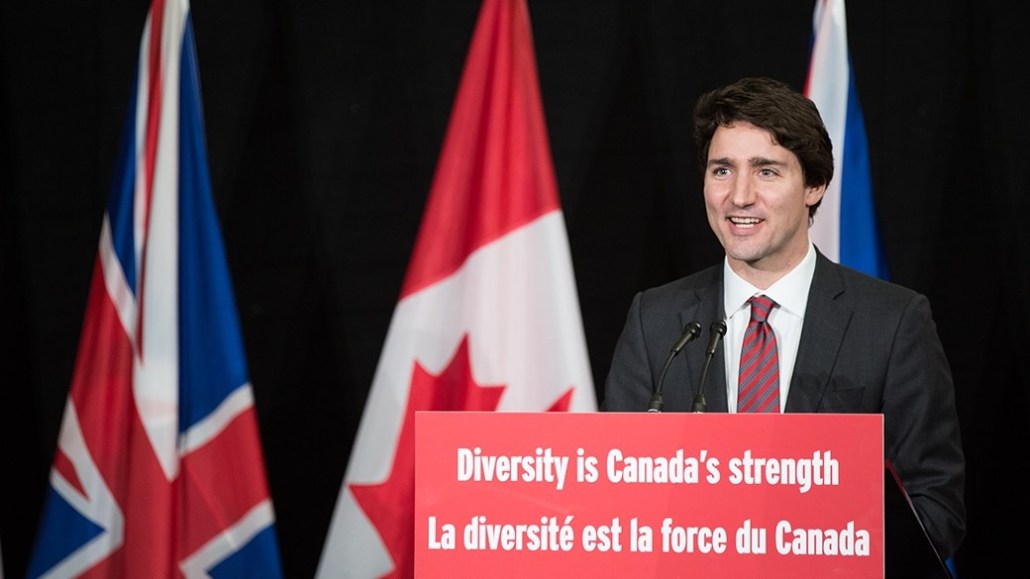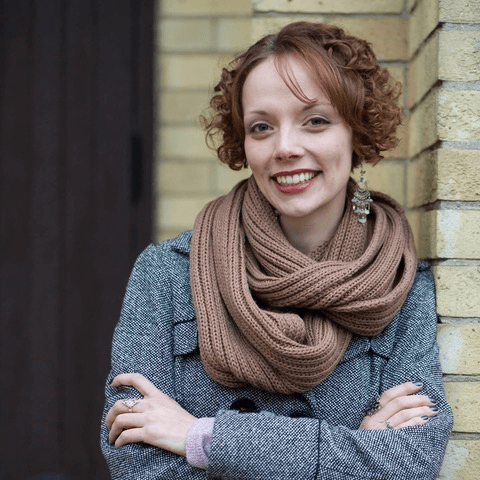A response to “Religion and Multiculturalism in Canada and Beyond”
With the election of President Donald Trump south of the border, many Canadians started asking whether a similar political outcome could take place in the True North. Researcher and public commentator Michael Adams’ new book Could it Happen Here?: Canada in the Age of Trump and Brexit was an instant national bestseller. Op-eds fill newspapers and radio interviews on whether Canada could follow suit.

Could it Happen Here? winner of the 2004 Donner Prize for best book on Canadian public policy. Author Michael Adams is the founder and president of Environics.
In her interview with Carmen Celestini, Wendy Fletcher warns that our political machinery has the capacity to override anybody’s rights or freedoms with a majority government [1]. Like many other scholars of diversity, Fletcher wants Canadians to be vigilant and aware that the capacity exists for the dissolution of the the “respect and dignity of multiculturalism.” Canada is not as “safe” as we tend to assume. By international cultural and legal standards, Canada is one of the world’s most open and accepting societies [2]. Yet there is a significant disparity between that ideal and the reality of numerous minorities’ lived experiences.
Most Canadians take great pride in the country’s diversity and official policy of multiculturalism (adopted as federal policy in 1971 in 1971 and enshrined in the Canadian Multiculturalism Act in 1988 [The current federal cabinet reflects what is both a reality and a national value, including (among many others) ministers from Francophone, Indigenous, Afghan, Somali, Italian, Chinese, Argentinian, and Indian heritage, with women filling 15 of the cabinet’s seats.] Prime Minister Justin Trudeau uses Twitter to welcome those seeking asylum and to diversity is Canada’s strength.

<
p style=”text-align: center;”>Fig. 2 2015 Federal Cabinet
When Prime Minister Justin Trudeau took office in 2015, he felt it was important to choose a cabinet that reflected Canada’s diversity. When a reporter asked him why he thought having women form half the cabinet, he famously replied, “Because it’s 2015.”
At the same time, public enthusiasm for multiculturalism exists alongside heated public debates around “accommodation,” politicians experimenting with “scary foreigner” tropes, and comes after a long history of discriminatory laws, views, and practices. The current conversation exists in a context where many Canadians see themselves as a nation that champions human rights and diversity, alongside and entwined with ideals of secularism and religious neutrality. This often leads to disputes around what constitutes “diversity.”
In their new work, A Space for Race: Decoding Racism, Multiculturalism, and Post-Colonialism in the Quest for Belonging in Canada and Beyond, Wendy Fletcher and Kathy Hogarth use narrative to explore the questions of ethnic and racial identity against the backdrop of Canada’s multicultural policies. In this interview, Fletcher argues that whether people feel like they belong is central to how well Canada is succeeding in this vision. She believes that greater awareness of the significant role religion plays in the lives and identities of Canadians is likewise necessary.
This brings to mind José Casanova’s seminal work Public Religions in the Modern World, in which he argues that the marginalization of religion is not a necessary outcome of the differentiation of secular spheres from religious institutions because public religions in modern societies do not necessarily threaten the foundations of liberal democracies [3].
Canadians encounter diversity on a daily basis. Most of these experiences are non-events [4]. Lori Beaman emphasizes this throughout her extensive scholarship, including Deep Equality in an Era of Religious Diversity (2017) and Beyond Accommodation: Everyday Narratives of Muslim Canadians (2018, with Jennifer Selby and Amélie Barras). Different beliefs can lead to dissimilar priorities for governing our lives, and some of these contrasts are irreconcilable. Therefore, Beaman argues that some common commitment and understanding is necessary for Canadian society to function and thrive, but this must be a narrative that allows for such diversity (and sameness). As cliché as it may seem, Beaman successfully demonstrates that what unites us truly is deeper than what divides us [5]. To some degree, we are all “us.”
Like Fletcher and Hogarth’s challenges to look beyond a simple mosaic model and earnestly ask what the new Canada will look like, Beaman wants her readers to consider the implications of phrases such as “religious accommodation” and their inherent power imbalances (someone must have the authority to grant the accommodation to the “other”) [6]. It is important to keep power (im)balances in view, while in practical terms of social cohesion and institutional function it is first necessary for individuals to become aware of and comfortable with the realities of religious diversity and multiculturalism.
<
p style=”text-align: center;”>
Above, Lori Beaman lectures based on The New Diversity at Uppsala University on January 25, 2018
It would be a worthwhile exercise to carefully read A Space for Race alongside Deep Equality, in which Beaman takes issue with a general emphasis in society and scholarship on difference. While not seeking to water down groups and individuals to some imagined lowest common denominator of “the same,” she argues that focusing on how the ways diverse people interact in uneventful everyday circumstances demonstrates the sameness that exists between them. She believes that this produces a “potential to create an alternative imaginary: from one of difference and diversity as ‘challenging’ and something to be ‘managed,’ to a framework of negotiation of difference, often through an emphasis on similarity … that models deep equality” [7]. This is in sharp contrast to, “us” tolerating or accommodating “them,” and ultimately preserving religious and cultural majority hegemonies [8]. Fletcher makes a similar point in her interview, speaking of a future that moves beyond “tolerance” to “celebration.” This is in sharp contrast to “us” tolerating or accommodating “them” and ultimately preserving religious and cultural majority hegemonies [9]. Minorities are an integral part of Canadian society, and – as Fletcher and Hogarth demonstrate – have been throughout the country’s history.
References
[1] In the interest of full disclosure, the author and Carmen Celestini are both graduates of the same doctoral program at the University of Waterloo, where Wendy Fletcher is a college president.
[2] Mary Anne Waldron, Free to Believe: Rethinking Freedom of Conscience and Religion in Canada (Toronto, ON: University of Toronto Press, 2013) 235-236.
[3] José Casanova, Public Religions in the Modern World (Chicago: University of Chicago Press, 1994).
[4] Lori Beaman, Deep Equality in an Era of Religious Diversity (Oxford: Oxford University Press, 2017), 3.
[5] See Beaman’s discussion on how “naiveté” is used as a charge to dismiss the power of non-divisive approaches to deep equality in Beaman, Deep Equality in an Era of Religious Diversity, 185-189.
[6] Lori G. Beaman, ed. Reasonable Accommodation: Managing Religious Diversity. (Vancouver: UBC Press, 2012).
[7] Beaman, Deep Equality, 8.
[8] See Introduction in Lori Beaman, Deep Equality.
[9] See Introduction in Lori Beaman, Deep Equality.



